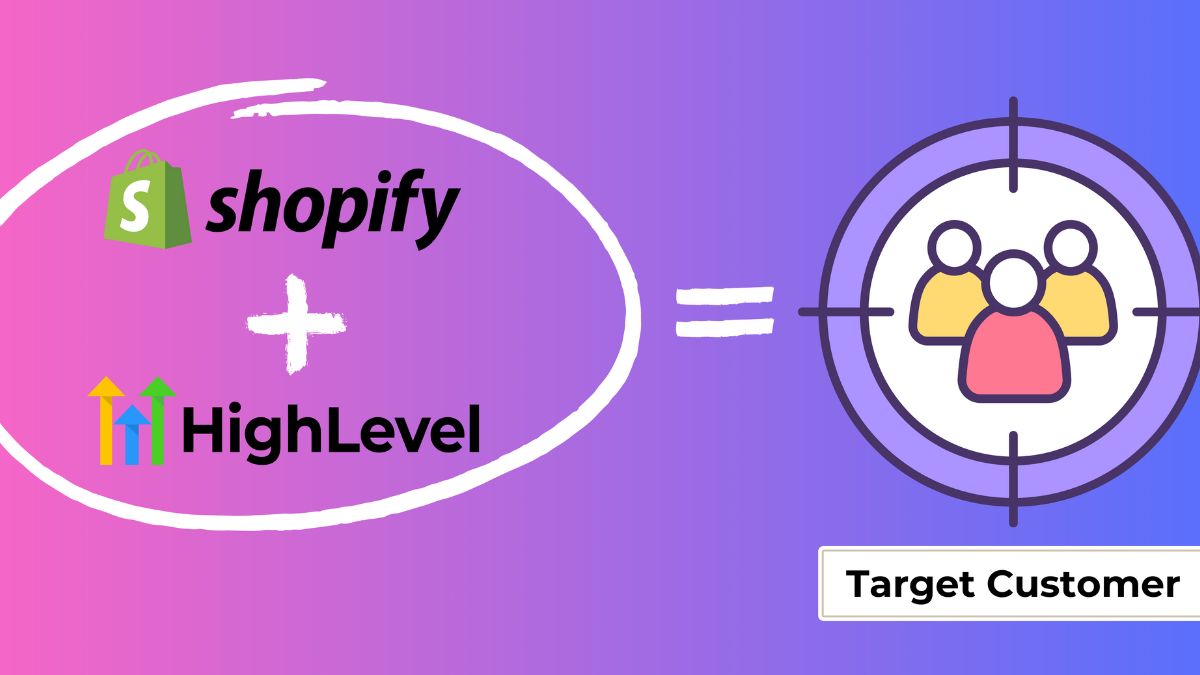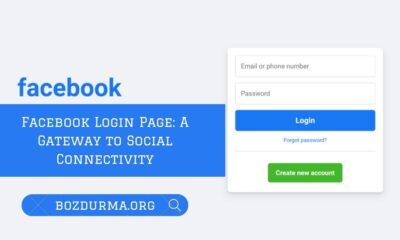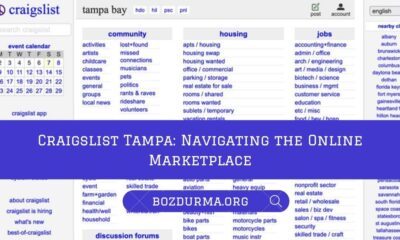BUSINESS
Mobile Notary Business Plan PDF: A Comprehensive Guide

Mobile Notary Business Plan PDF :Nowadays, ease of use is paramount. Since remote notarization is now possible, a new industry has emerged to meet the need for mobile notary services. This document serves as a PDF-formatted, how-to manual for establishing a mobile notary service. This complete book will help you launch and grow a successful mobile Notary Business Plan PDF regardless of your level of business experience.
1.Introduction
The ease of a mobile notary service has led to a significant rise in its demand. This method of doing business facilitates the notarization of legal documents for both people and enterprises without the need for the customer to leave the comfort of their own location.
2.Understanding theMobile Notary Business Plan PDF
-
What is a Mobile Notary?
A mobile notary is a public notary who may meet customers where and when it is most convenient for them, rather than having to travel to meet them. Notarial services include the authentication of legal documents such as contracts, wills, and deeds.
-
Why Choose a Mobile Notary Business Plan PDF
Flexibility, convenience, and access to more customers are just a few of the benefits that a mobile notary service may provide. When time is of the essence, clients prefer having a notary visit to their location.
3.Market Research and Analysis
-
Identifying Your Target Audience
Knowing who you’re trying to reach is essential in the mobile notary industry. People, corporations, and professionals in the real estate industry, as well as law firms, may all be potential customers for a notary’s services.
-
Analyzing Market Trends
Keep abreast on current events in the notary field. Find out how much of a need there is in your region for mobile notary services, and use that information to expand your business.
4.Creating a Business Plan
-
Executive Summary
In the executive summary of your business plan, you should include an overview of your mobile notary firm, its objectives, and the services it provides.
-
Company Description
Introduce your company’s background, values, and future goals. Describe the benefits that your mobile notary service offers over similar businesses.
-
Services Offered
You should specify the types of notarizations (general, loan, etc.) that you will perform.
-
Marketing Strategy
Explain how you intend to bring in customers, and include both online and offline tactics.
5.Legal Considerations
-
Licensing and Certification
Verify that you are of legal age and that you fulfill any other notary requirements in your area. Get yourself certified and licensed to work as a notary public.
-
Insurance Requirements
Examine your possibilities for error-and-omissions insurance to safeguard your company and its clientele.
6.Setting Up Your Office
-
Home Office vs. Mobile Office
You must choose between working from your house and a mobile office. Get the bare minimum of tools and gadgets for your office.
-
Essential Equipment and Supplies
Include a notary stamp, a diary, and a means of transportation on your list of necessities.
7.Pricing and Fee Structure
-
Determining Your Pricing Strategy
Establish fair rates for your notarial services after considering both the market and your operating costs.
-
Competitor Analysis
Learn about the costs and features of your rivals’ services.
8.Marketing and Promotion
-
Building an Online Presence
Make a website, social media accounts, and internet directories to advertise your business.
-
Networking and Partnerships
Create a network of local merchants, brokers, and lawyers who can recommend you to potential customers.
9.Operations and Workflow
-
Handling Notarization Appointments
Create a method for handling notarization appointments with ease.
-
Document Management
Protect sensitive customer data by using encrypted document storage and management procedures.
10.Customer Service and Satisfaction
-
Building Trust with Clients
If you want your customers to trust you and return to your firm, you need to treat them like royalty.
-
Handling Customer Inquiries
Respond quickly to queries and issues raised by customers.
11.Financial Projections
-
Creating a Financial Forecast
Create a budget that specifies how much money will be coming in and how much will be going out.
-
Managing Cash Flow
If you want your firm to run smoothly, you need to employ sound financial management methods.
12.Scaling Your Business
-
Expanding Your Service Area
Think about offering your services to a wider area.
-
Hiring Additional Notaries
With an increase in clientele comes the need to expand your team of notaries.
13.Legal Compliance
-
Staying Updated with Regulations
Maintain a level of familiarity with local rules and guidelines that apply to notaries in your region.
-
Data Privacy and Security
Take precautions to keep customer information secure and private.
14.Monitoring and Evaluation
-
Key Performance Indicators (KPIs)
Create Key Performance Indicators to evaluate how well your mobile notary service is doing.
-
Adapting to Changes
Always be ready to modify your company plan in response to market shifts.
15.Conclusion
It is important to put in the time and effort necessary to launch a successful mobile notary service. If you follow this whole tutorial, you’ll be ready to draft a winning PDF business plan for a mobile notary service. Always keep in mind that the secret to success in this field is to provide excellent service and earn the confidence of your customers.
16.FAQ’s
1.Is certification required to become a mobile notary?
To work as a traveling notary public, you will most likely need to get certified. Find out the specifics by researching the laws in your state.
2.How do I set my pricing for mobile notary services?
When determining your prices, it is important to first do market research and then to include in your costs.
3.What equipment do I need to start a Mobile Notary Business Plan PDF?
A notary stamp, a logbook, and transportation are all required pieces of equipment for a notary public.
4.Can I expand my Mobile Notary Business Plan PDF to other states?
To do business in more than one state, you can be required to get supplementary certificates and licenses. Study all 50 states
BUSINESS
Connect Shopify Forms to HighLevel: Streamlining Your Business Processes

Connect Shopify Forms to HighLevel: In the ever-changing realm of electronic commerce, effectiveness and smooth functioning are crucial. Integrating Shopify forms with HighLevel may be a game-changer for companies who use HighLevel for marketing and customer relationship management and Shopify for their online storefronts. This post will walk you through each stage of the procedure, including the advantages, requirements, difficulties, and best practices for a fruitful integration.
1. Understanding Shopify Forms
Shopify forms are vital for obtaining the data that is needed from clients. These forms are the entry point to important information that drives your business strategy, whether they are used for purchase processing, newsletter subscriptions, or contact forms.
2. Exploring HighLevel
Conversely, HighLevel is a full-featured marketing and CRM platform made to improve customer relationship management, automate marketing procedures, and expedite communication. Because of its powerful features and easy-to-use design, it is the first choice for companies trying to improve their marketing.
3. Benefits of Connecting Shopify Forms to HighLevel
The combination of HighLevel with Shopify forms has several benefits. Businesses may improve customer relationship management overall, optimize marketing automation, and speed data collecting by smoothly integrating these two systems.
4. Step-by-Step Guide to Connect Shopify Forms to HighLevel
Accessing the Shopify Admin Dashboard:
Log into your Shopify admin dashboard to get started.
Integrating HighLevel with Shopify:
Go to the Apps area, look for HighLevel, and select the integration option.
Customizing Form Data Synchronization:
To guarantee a seamless data transfer between Shopify forms and HighLevel, adjust the synchronization parameters to your specific business requirements.
5. Common Challenges and Solutions
Although the integration procedure is usually simple, users sometimes run into difficulties. There may be problems with form customisation or delays in data synchronization. But most problems have easy fixes, and our troubleshooting advice will help you find them.
6. Best Practices for Optimizing the Connection
For the connection to be optimized, data security must be guaranteed, and HighLevel features must be utilized efficiently. Successful integrations depend on frequent setting updates, data flow monitoring, and awareness of new capabilities.
7. Success Stories
Empirical instances demonstrate the revolutionary potential of integrating Shopify forms with HighLevel. Enterprises have seen enhanced productivity, amplified client involvement, and a noteworthy surge in revenue.
8. Future Trends in E-commerce Integrations
E-commerce connections change along with technology. Keep up with the times by being aware of new trends and how platforms like HighLevel and Shopify are evolving to provide businesses innovative alternatives.
9. Case Study: A Business Transformation
Explore a thorough case study that demonstrates the real-world advantages of combining HighLevel with Shopify forms. Examine how a company had a good transition, such as improved data management or more focused marketing efforts.
10. User Feedback and Reviews
Find out what others are saying about the Shopify-HighLevel integration from users. Constructive criticism and encouraging comments offer valuable perspectives on the usefulness of combining various venues.
11. Comparison with Alternatives
Although there are many platforms with connection choices, HighLevel is unique due to its strong features, easy-to-use interface, and smooth Shopify compatibility. To make an informed choice, weigh the pros and cons of the many options.
12. Tips for Maximizing Results
To get the most out of HighLevel after the first integration, make use of its other capabilities. For long-term success, investigate cutting-edge features and put continuous optimization techniques into practice.
13. Conclusion
In conclusion, companies looking to streamline their processes would be wise to integrate Shopify forms with HighLevel. Businesses are able to get useful data, automate marketing procedures, and improve client interactions thanks to the smooth connectivity. Accept the e-commerce of the future by forming this strong collaboration.
14. FAQs
1. Is the integration process complicated?
Not at all. The setup procedure is made simple with our comprehensive guide, and the integration process is easy to utilize.
2. How secure is the data transfer between Shopify and HighLevel?
Data security is a top priority for both systems. Secure and secured data flow is guaranteed by the integration.
3. Can I customize the form fields for synchronization?
Unquestionably. During the integration process, adjust the form data synchronization based on your business requirements.
4. Are there any additional costs associated with the integration?
The service usually includes some level of basic integration. But be sure to look for any conditions or other features that can have an additional fee.
5. What if I face issues after integration?
You may get troubleshooting advice from our post, and Shopify and HighLevel both have support teams that are committed to helping you.
BUSINESS
Pfizer Layoffs: Navigating Challenges and Embracing Change

The announcement of massive reductions in staff at Pfizer, the world’s largest pharmaceutical company, recently grasped headlines. The move has many questioning why it has been chosen along with what it means for the organization and the employees it employs.
1. Reasons Behind Pfizer Layoffs
Pfizer’s decision-making of organizational change had been influenced by changing market conditions, since the pharmaceutical sector is recognized for its unpredictable character. Job reductions are a result of the company’s desire to remain competitive and adapt to changes in the competitive landscape, as stated by law enforcement.
2. Number of Employees Affected
Numerous departments are affected by the massive number of layoffs, which affect thousands of workers. The departments that were most severely impacted and the total amount of layoffs are highlighted in this section that digs into the numbers.
3. Impact on Pfizer’s Finances
There are consequences for money in addition to the human element. In addition to examining how the stock market has reacted to this corporate action, the piece also examines how the layoffs have affected Pfizer’s financial results.
4. Employee Support Initiatives
Severance benefits and reemployment support initiatives have been implemented by Pfizer to lessen the impact on impacted workers. An extensive examination of these programs and their methods for assisting the unemployed is given in this section.
5. Industry Analysis
Pfizer’s choice makes sense when considering the present developments in the pharmaceutical business as well as global economic considerations. It is essential to grasp the broader context in order to fully appreciate the difficulties the organization faces.
6. Public and Stakeholder Reactions
Views held by the general population are greatly influenced by investment sentiment and media coverage. Examining the reactions of investors, stakeholders, and the media to the layoff news is the focus of this section.
7. Pfizer’s Future Plans
And for Pfizer, what’s next? The article investigates the company’s future intentions and any strategic adjustments that may have precipitated the layoffs. It’s critical for both employees and investors to comprehend the long-term goal.
8. Comparison with Other Pharma Companies
Existing patterns in the pharmaceutical sector that might explain Pfizer’s layoffs? Providing a more comprehensive view of industry developments, this section contrasts Pfizer’s position with that of other pharmaceutical businesses.
9. Challenges and Opportunities
Although there are many difficulties, Pfizer and the impacted workers might take advantage of certain chances as well. The negative effects on Pfizer and the benefits for people enduring this time of transition are discussed in this section.
10. Expert Opinions
Deeper knowledge of the dynamics at play is provided by insights from market analysts and industry professionals. For a complete picture of the issue, professional opinions are gathered in this area.
11. Governmental Response
It’s important to think about the effects on regulations and the government’s assistance for impacted workers. The regulatory agencies’ response and the aid that affected parties can get are described in this section.
12. Pfizer’s Social Responsibility
Pfizer owes its community a social duty that extends beyond the business world. The company’s CSR programs and interactions with the larger community are examined in this section.
13. Employee Stories
This part offers a personal story from impacted employees, bringing a human touch and illuminating their coping mechanisms and experiences during this trying time.
14. Conclusion
The Pfizer layoffs, in summary, represent an important turning point in the history of the business. This article has looked at the causes for the layoffs, the effects they had on the finances and the workforce, and the larger industrial background. Though Pfizer’s future is still unclear as it navigates these changes, the pharmaceutical behemoth is ready for a fresh start.
15. FAQs
1. How many employees are affected by Pfizer layoffs?
Many departments are affected by the layoffs, which affect thousands of workers.
2. What support is Pfizer providing to affected employees?
Severance benefits and services to support job seekers are provided by Pfizer.
3. How has the stock market responded to Pfizer’s layoffs?
The financial effects and the stock market’s response are covered in the article.
4. Are Pfizer’s layoffs part of a larger trend in the pharmaceutical industry?
Industry trends may be gleaned by comparing with other pharmaceutical businesses.
5. What are Pfizer’s future plans after the layoffs?
Pfizer’s future vision and any strategic changes within the corporation are examined in this article.
BUSINESS
The Top 5 Benefits of Executive Coaching for Business Leaders

Business leaders who commit to partnering with an executive coach have decided to carve out time every week or month to step away from the day-to-day emergencies to elevate their strategy and get the kinks worked out of their leadership skills. This will ultimately lead to more productivity and a happier, more fulfilled life.
Better Relationships with Employees
Rather than focusing on skills development, executive coaching Denver, CO, helps leaders understand how they impact their employees and company culture. This is important, as the best business leaders know that culture is key to employee retention and success.
This includes identifying leadership blind spots, such as resistance to structuring time, overconfidence, or a lack of communication. Then, through guided coaching sessions, coaches help leaders explore their personal beliefs and behaviors to address these issues.
In addition, coaches can provide participants with assessments and stakeholder interviews to bolster self-awareness and develop strategies for building professional presence, navigating conflict, and leading with empathy. Ultimately, these insights and experiences can be applied to the workplace, helping business leaders improve employee relationships.
Improved Efficiency
When executives work with a coach, they are better equipped to navigate challenges and roadblocks. They can also prioritize their personal and professional goals and develop strategies for reaching them.
Executive coaching is a great way to fine-tune leadership abilities and ensure managers can effectively inspire and guide their teams. Coaches can help leaders address issues such as managing conflict, strategic decision-making, and effective communication.
The goal of an executive coach is to improve the leader’s overall effectiveness and productivity, which leads to positive ripple effects within the organization. In addition to helping the individual, executive coaches can teach the entire organization how to implement new practices and cultivate a strong leadership culture.
Increased Profits
An executive coach can help leaders become more efficient, improve their sales, and grow their companies. This translates into increased revenue.
An expert coach can help leaders develop their leadership capacity to create and nurture a culture that inspires employees to be more productive, risk-takers, and results-oriented. This leads to increased revenue and positively impacting the company’s overall performance.
Coaching also helps to improve strategic thinking and decision-making. A coaching relationship can reveal blind spots that a leader would otherwise have missed, and it can also provide a framework for developing actionable strategies that will directly impact the organization’s profitability. This translates into quantifiable ROI, which can be measured via employee satisfaction surveys and other data sources.
Increased Productivity
Executive coaches help their clients hone their leadership skills, but the benefits extend beyond the individual leader. Companies that invest in executive coaching report more productive employees, positively impacting the company culture and better bottom-line results.
The right coach will delve into both professional and personal issues. They will also encourage a balance between work and life. This is important because many of the problems executives face at work are problems from home that must be addressed.
A good coaching candidate should have a proven track record of helping leaders improve their performance and achieve success. They will also have credentials, such as being a certified business coach or having an MBA. They will also know the issues facing high-level executives and corporate leaders.
Increased Productivity
It’s no secret that effective leadership leads to a productive workplace. Coaching helps leaders hone their leadership skills and improve overall performance. This, in turn, increases productivity for the entire organization. Business leaders face many challenges, including balancing personal and professional life, time management, and stress reduction. Coaching guides aid in a healthier work/life balance and help leaders prioritize self-care. Building and communicating a long-term organizational strategy is one of the biggest challenges for executive leaders. Coaching helps them develop a communication strategy that builds employee buy-in and aligns stakeholders.
-

 NEWS6 months ago
NEWS6 months agoDystopian 1993 Novel NYT: Navigating a Dark Literary Landscape
-

 TECHNOLOGY5 months ago
TECHNOLOGY5 months agoFacebook Login Page: A Gateway to Social Connectivity
-

 BUSINESS6 months ago
BUSINESS6 months agoConnect Shopify Forms to HighLevel: Streamlining Your Business Processes
-

 HOME5 months ago
HOME5 months agoCraigslist Tampa: Navigating the Online Marketplace
-

 CELEBRITY8 months ago
CELEBRITY8 months agoMyrtle Gonzalez: A Trailblazer in Early Cinema
-

 HOME5 months ago
HOME5 months agoThe Clear Advantage: Unpacking the Benefits of Clear Backpack
-

 EDUCATION9 months ago
EDUCATION9 months agoHumble Beginners: Navigating the Path to Success
-

 HOME5 months ago
HOME5 months agoSnow Storm: Navigating the Whirlwind
